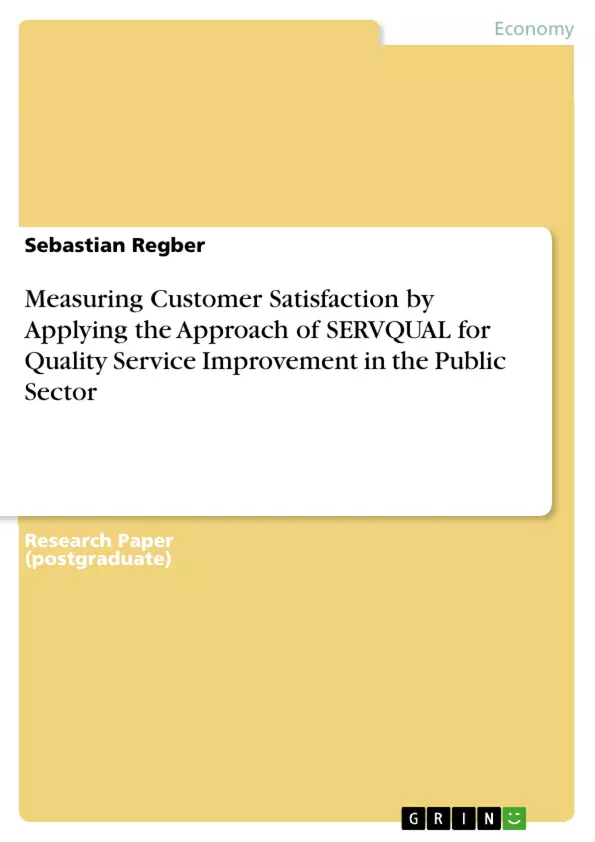This literature review contains the conceptual background including a definition and model of SERVQUAL, a critique followed by a review of SERVQUAL in the public sector. Conclusion and implications for future research follow.
Since market competition has become more antagonistic, the awareness of customer service has risen. The last two decades show that quality of service ought to be the key of success of the marketing strategy. Therefore, the vendor should get a chance to measure it in order to rate his competitiveness. According to Zeithaml et al. (1988), research and company experience reveals that advanced service quality generates calculable gains in returns, cost savings and market share. Thus, there was the motivation to develop a service quality model.
Recently, the established and well-known model of measurement of service quality is SERVQUAL, established as a tool by Parasuraman et al. (1985; 1988). Furthermore, it has been widely used since the mid-eighties in several case studies. Parasuraman et al. (1985) are the pioneers of service quality measurement, and they developed it further over the years through a series of academic papers to be selectively considered in the following literature review. Nyeck et al. (2002) stated that several researchers in this area emphasize the explanation of the perceived quality by using SERVQUAL approach due to its popularity caused “by its ease of use and by adaptability to diverse service sectors” (p.102).
Table of Contents
- Introduction
- Conceptual Background
- Definition and model
- Criticism
- SERVQUAL in the public sector
- Conclusion
- Future research
- Reference List
Objectives and Key Themes
This literature review aims to provide a comprehensive overview of the SERVQUAL model, a widely used tool for measuring service quality. It explores the definition and model of SERVQUAL, analyzes its criticisms, and reviews its application within the public sector. The review concludes by discussing implications for future research.
- Definition and model of SERVQUAL
- Criticisms of the SERVQUAL model
- Application of SERVQUAL in the public sector
- Measurement of service quality
- Gaps in service quality perceptions
Chapter Summaries
The introduction highlights the growing importance of customer service and the need for effective measurement tools in today's competitive market. It introduces the SERVQUAL model, a framework for measuring service quality, and outlines the review's scope and structure. The conceptual background section delves into the definition and model of SERVQUAL, exploring its underlying principles and dimensions. This chapter also reviews criticisms of the model and its application within the public sector.
Keywords
The primary focus of this review is on the SERVQUAL model, service quality, customer expectations, service performance, and the five dimensions of service quality: reliability, assurance, tangibles, empathy, and responsiveness. The review also examines the concept of gaps in service quality perceptions and their impact on customer satisfaction.
- Quote paper
- Sebastian Regber (Author), 2010, Measuring Customer Satisfaction by Applying the Approach of SERVQUAL for Quality Service Improvement in the Public Sector, Munich, GRIN Verlag, https://www.grin.com/document/159847



